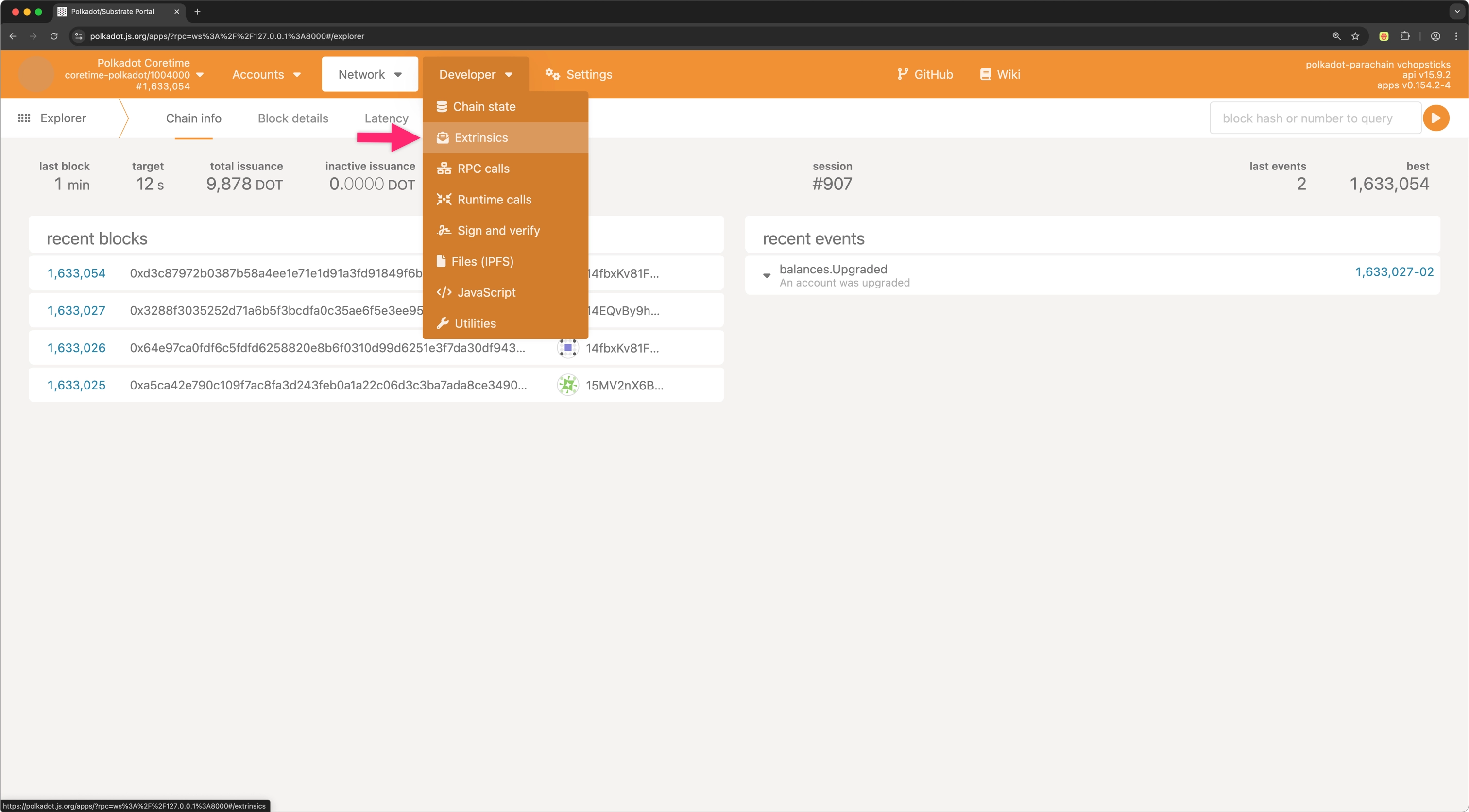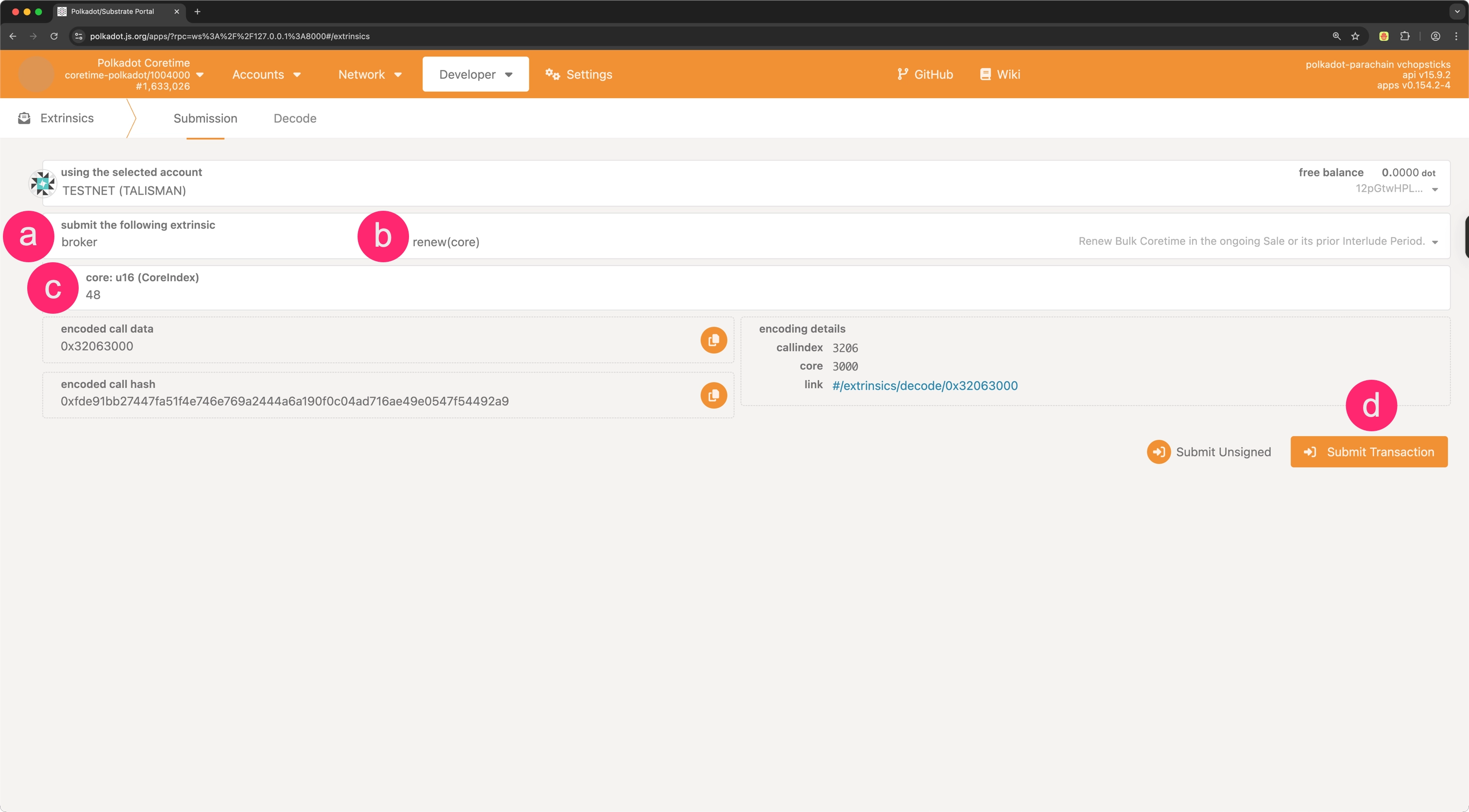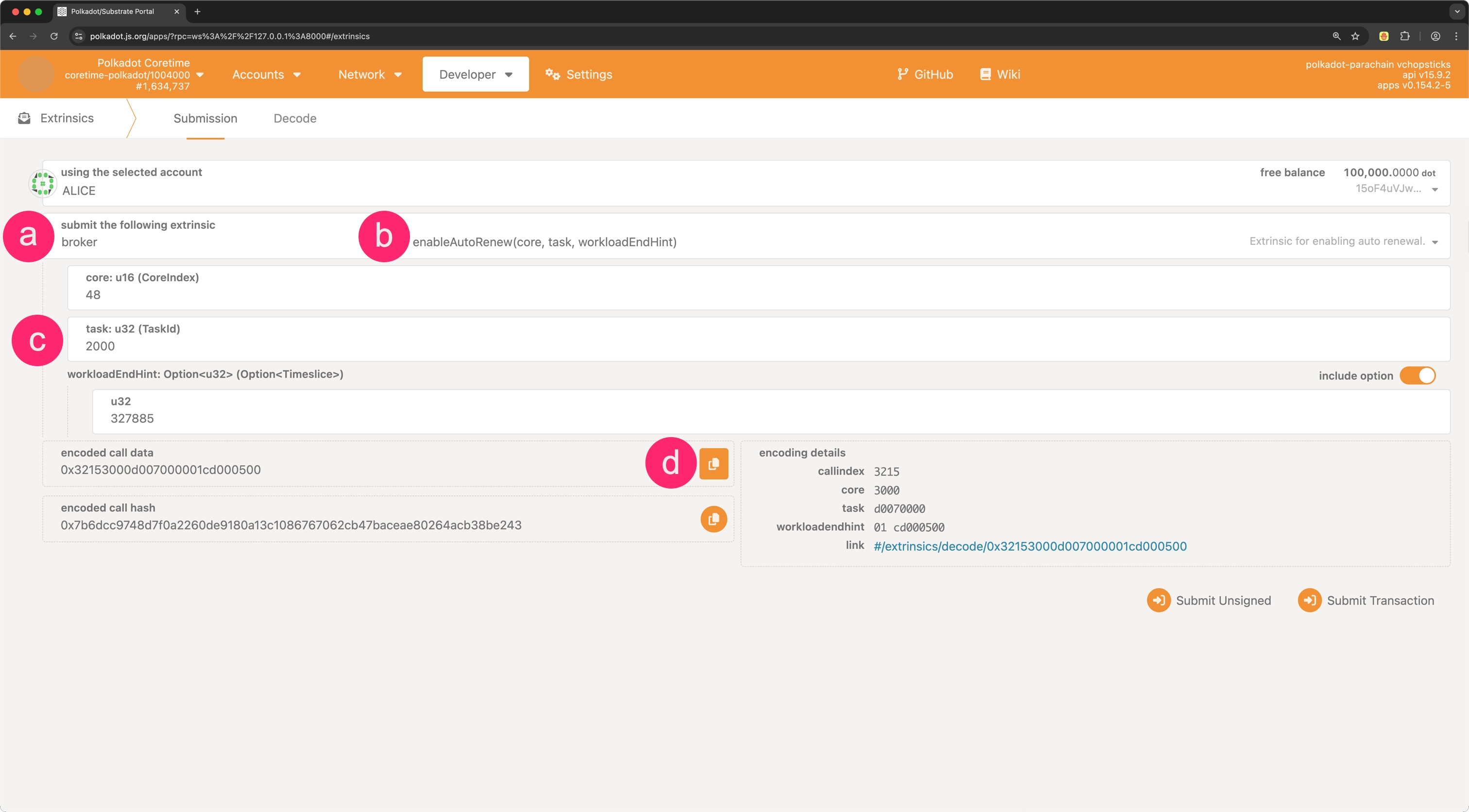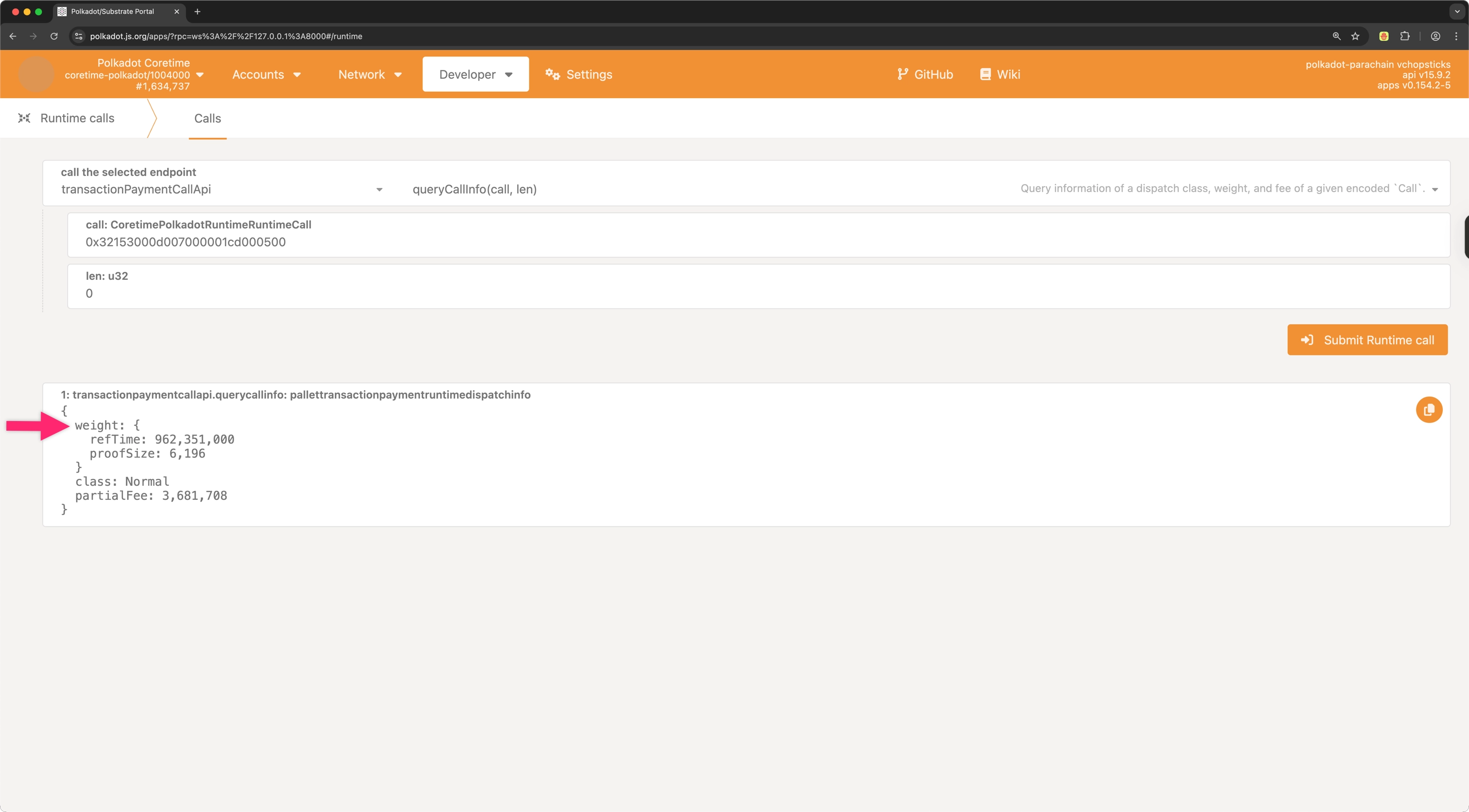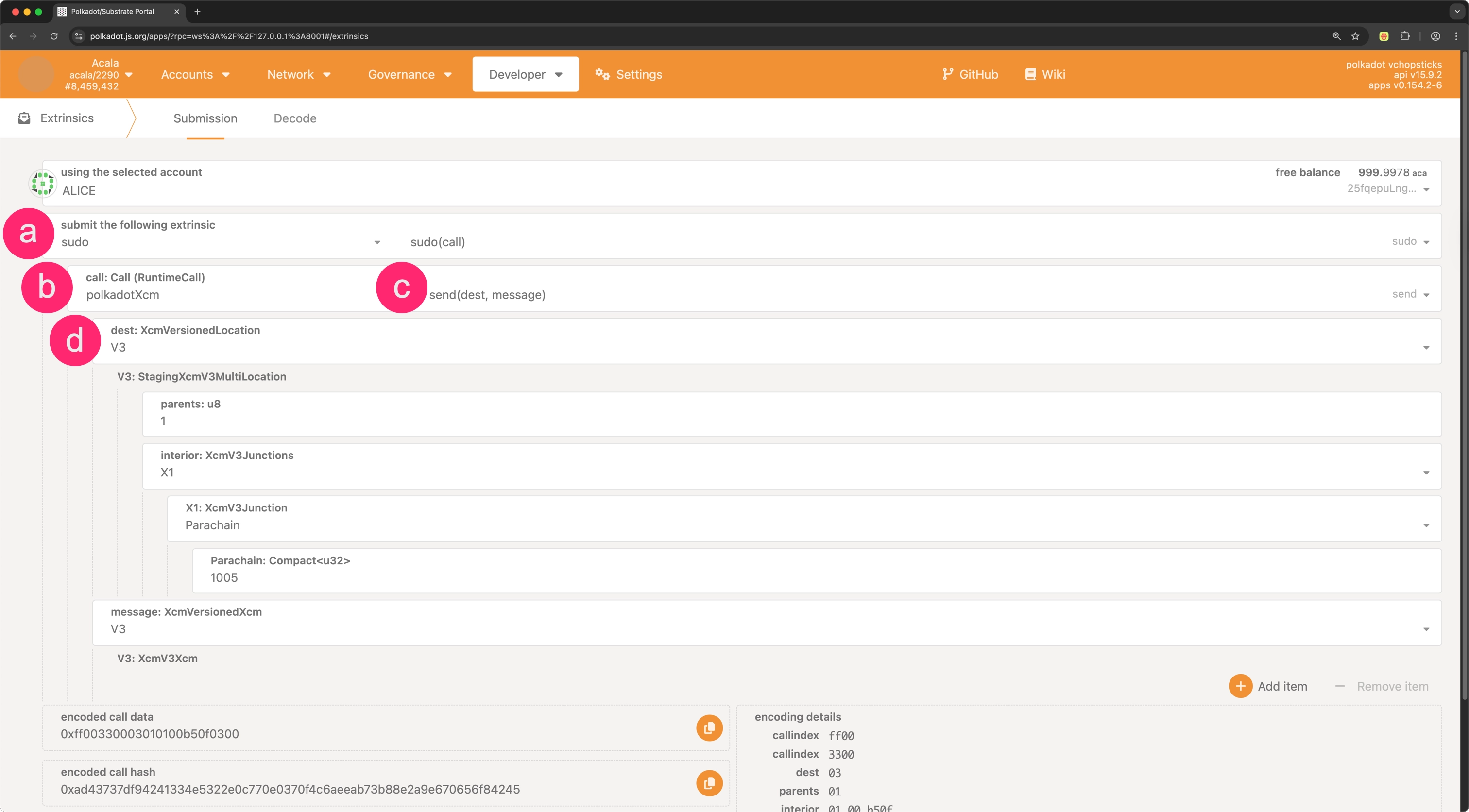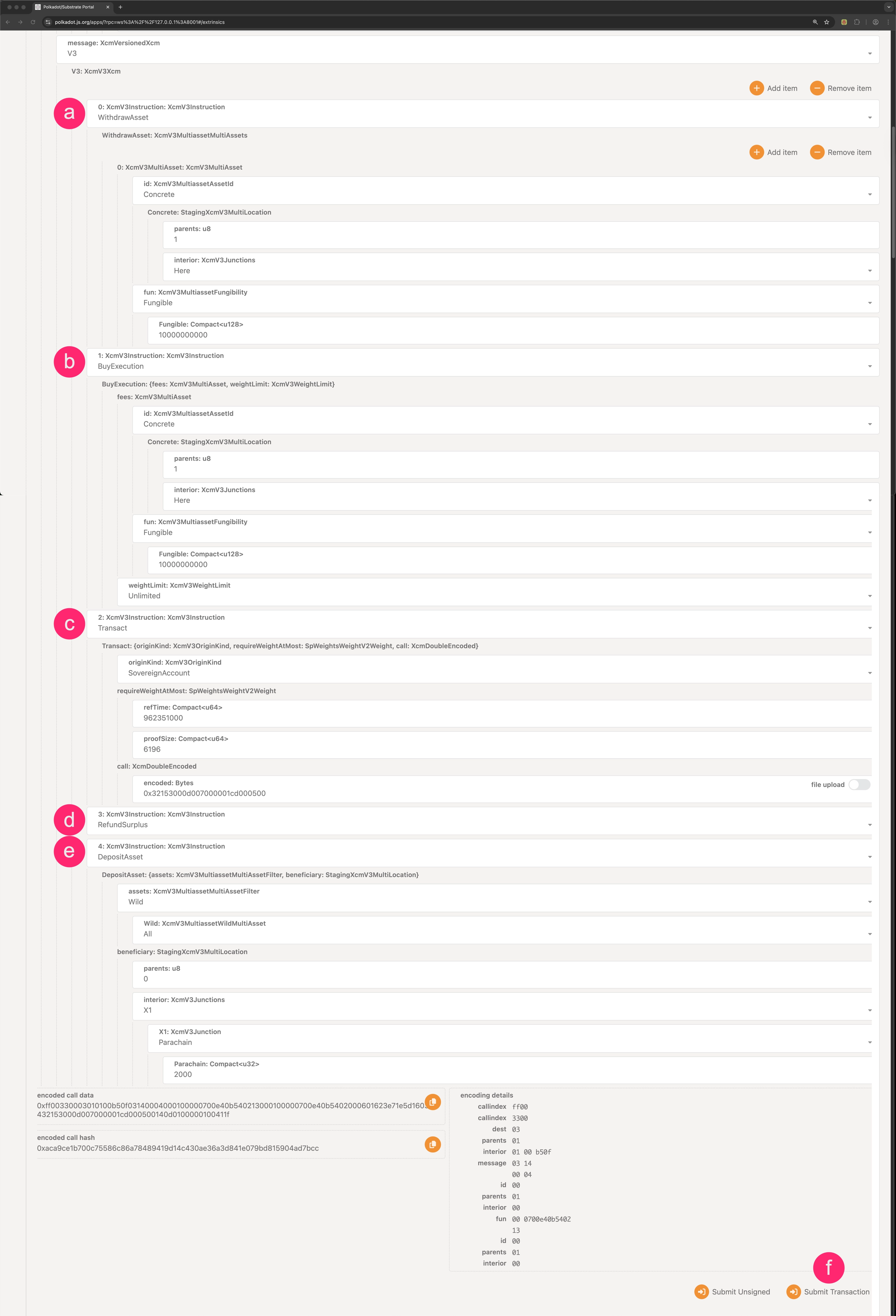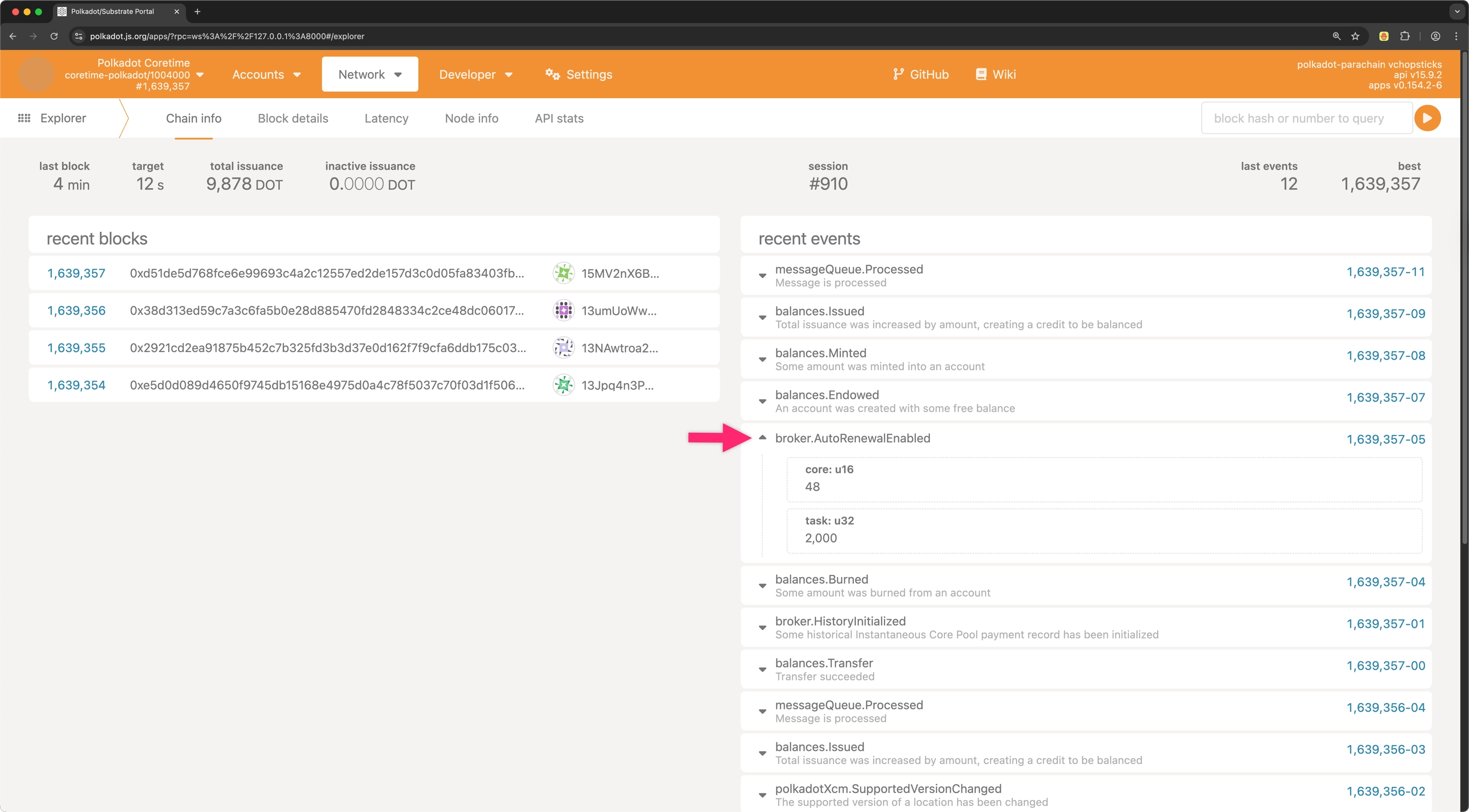Coretime Renewal¶
Introduction¶
Coretime can be purchased in bulk for a period of 28 days, providing access to Polkadot's shared security and interoperability for Polkadot parachains. The bulk purchase of coretime includes a rent-control mechanism that keeps future purchases within a predictable price range of the initial purchase. This allows cores to be renewed at a known price without competing against other participants in the open market.
Bulk Sale Phases¶
The bulk sale process consists of three distinct phases:
- Interlude phase: The period between bulk sales when renewals are prioritized.
- Lead-in phase: Following the interlude phase, a new
start_priceis set, and a Dutch auction begins, lasting forleadin_lengthblocks. During this phase, prices experience downward pressure as the system aims to find market equilibrium. The final price at the end of this phase becomes theregular_price, which will be used in the subsequent fixed price phase. - Fixed price phase: The final phase where remaining cores are sold at the
regular_priceestablished during the lead-in phase. This provides a stable and predictable pricing environment for participants who did not purchase during the price discovery period.
For more comprehensive information about the coretime sales process, refer to the Coretime Sales section in the Polkadot Wiki.
Renewal Timing¶
While renewals can technically be made during any phase, it is strongly recommended that they be completed during the interlude phase. Delaying renewal introduces the risk that the core could be sold to another market participant, preventing successful renewal. Renewals must be initiated well in advance to avoid the scenario above.
For example, if you purchase a core in bulk sale #1, you obtain coretime for the upcoming bulk period (during which bulk sale #2 takes place). Your renewal must be completed during bulk sale #2, ideally during its interlude phase, to secure coretime for the subsequent period.
Manual Renewal¶
Cores can be renewed by issuing the broker.renew(core) extrinsic during the coretime sale period. While this process is straightforward, it requires manual action that must not be overlooked. Failure to complete this renewal step before all available cores are sold could result in your parachain being unable to secure a core for the next operational period.
To manually renew a core:
-
In Polkadot.js Apps, connect to the Coretime chain, navigate to the Developer dropdown, and select the Extrinsics option.
-
Submit the
broker.renewextrinsic:- Select the broker pallet.
- Choose the renew extrinsic.
- Fill in the core parameter.
- Click the Submit Transaction button.
For optimal results, the renewal should be performed during the interlude phase. Upon successful submission, your core will be renewed for the next coretime period, ensuring the continued operation of your parachain.
Auto-Renewal¶
The coretime auto-renewal feature simplifies maintaining continuous coretime allocation by automatically renewing cores at the beginning of each sale period. This eliminates the need for parachains to manually renew their cores for each bulk period, reducing operational overhead and the risk of missing renewal deadlines.
When auto-renewal is enabled, the system follows this process at the start of each sale:
- The system scans all registered auto-renewal records.
- For each record, it attempts to process renewal payments from the task's sovereign account (which is the sibling account on the Coretime chain derived from the parachain ID).
- Upon successful payment, the system emits a
Renewedevent and secures the core for the next period. - If payment fails due to insufficient funds or other issues, the system emits an
AutoRenewalFailedevent.
Even if an auto-renewal attempt fails, the auto-renewal setting remains active for subsequent sales. This means the setting persists across multiple periods once you've configured auto-renewal.
To enable auto-renewal for your parachain, you must configure several components, as detailed in the following sections.
Set Up an HRMP Channel¶
A Horizontal Relay-routed Message Passing (HRMP) channel must be opened between your parachain and the Coretime system chain before configuring auto-renewal.
For instructions on establishing this connection, consult the Opening HRMP Channels with System Parachains guide.
Fund Sovereign Account¶
The sovereign account of your parachain on the Coretime chain needs adequate funding to cover both XCM transaction fees and the recurring coretime renewal payments.
To determine your parachain's sovereign account address, you can:
-
Use the "Para ID" to Address section in Substrate Utilities with the Sibling option selected.
-
Calculate it manually:
-
Identify the appropriate prefix:
- For sibling chains:
0x7369626c(decodes tob"sibl").
- For sibling chains:
-
Encode your parachain ID as a u32 SCALE value:
- For parachain 2000, this would be
d0070000.
- For parachain 2000, this would be
-
Combine the prefix with the encoded ID to form the sovereign account address:
- Hex:
0x7369626cd0070000000000000000000000000000000000000000000000000000 - SS58 format:
5Eg2fntJ27qsari4FGrGhrMqKFDRnkNSR6UshkZYBGXmSuC8
- Hex:
-
Auto-Renewal Configuration Extrinsics¶
The Coretime chain provides two primary extrinsics for managing the auto-renewal functionality:
-
enable_auto_renew(core, task, workload_end_hint): Use this extrinsic to activate automatic renewals for a specific core. This transaction must originate from the sovereign account of the parachain task.Parameters:
core: The core currently assigned to the task.task: The task for which auto-renewal is being enabled.-
workload_end_hint: The timeslice at which the currently assigned core will stop being used. This value helps the system determine when auto-renewal should begin. It is recommended to always provide this value to avoid ambiguity.-
If the coretime expires in the current sale period, use the last timeslice of the current sale period.
-
If the coretime expires at the end of the next sale period (e.g., because you've already renewed), use the last timeslice of the next sale period.
-
If a lease is active, use the timeslice when the lease ends.
-
-
disable_auto_renew(core, task): Use this extrinsic to stop automatic renewals. This extrinsic also requires that the origin is the sovereign account of the parachain task.Parameters:
core: The core currently assigned to the task.task: The task for which auto-renewal is enabled.
Construct the Enable Auto-Renewal Extrinsic¶
To configure auto-renewal, you'll need to gather specific information for the enable_auto_renew extrinsic parameters:
-
core: Identify which core your parachain is assigned to when it expires. This requires checking both current assignments and planned future assignments.- For current period: Query
broker.workload(). - For next period: Query
broker.workplan().
Example for parachain
2000:-
Current assignment (workload):
-
Future assignment (workplan):
Note: Use the core from workplan (
48in this example) if your task appears there. Only use the core from workload if it's not listed in workplan. - For current period: Query
-
task: Use your parachain ID, which can be verified by connecting to your parachain and queryingparachainInfo.parachainId(). -
workload_end_hint: You should always set it explicitly to avoid misbehavior. This value indicates when your assigned core will expire. Here's how to calculate the correct value based on how your core is assigned.-
If the parachain uses bulk coretime, query
broker.saleinfo. You’ll get a result like:{ "saleStart": 1544949, "leadinLength": 100800, "endPrice": 922760076, "regionBegin": 322845, "regionEnd": 327885, "idealCoresSold": 18, "coresOffered": 18, "firstCore": 44, "selloutPrice": 92272712073, "coresSold": 18 }-
If the core expires in the current sale, use the
regionBeginvalue, which in this case is322845. -
If the core has already been renewed and will expire in the next sale, use the
regionEndvalue. In this example, that would be327885.
-
-
If the parachain has a lease, query
broker.leases, which returns entries like:- Use the
untilvalue of the lease that corresponds to your task. For example,359280would be the value forworkload_end_hintin the case of task2035.
- Use the
-
Once you have these values, construct the extrinsic:
-
In Polkadot.js Apps, connect to the Coretime chain, navigate to the Developer dropdown, and select the Extrinsics option.
-
Create the
broker.enable_auto_renewextrinsic:- Select the broker pallet.
- Choose the enableAutoRenew extrinsic.
- Fill in the parameters.
- Copy the encoded call data.
For parachain
2000on core48withworkload_end_hint327885, the encoded call data is:0x32153000d007000001cd000500. -
Check the transaction weight for executing the call. You can estimate this by executing the
transactionPaymentCallApi.queryCallInforuntime call with the encoded call data previously obtained.
Submit the XCM from Your Parachain¶
To activate auto-renewal, you must submit an XCM from your parachain to the Coretime chain using Root origin. This can be done through the sudo pallet (if available) or your parachain's governance system.
The XCM needs to execute these operations:
- Withdraw DOT from your parachain's sovereign account on the Coretime chain.
- Buy execution to pay for transaction fees.
- Execute the auto-renewal extrinsic.
- Refund surplus DOT back to the sovereign account.
Here's how to submit this XCM using Acala (Parachain 2000) as an example:
-
In Polkadot.js Apps, connect to your parachain, navigate to the Developer dropdown and select the Extrinsics option.
-
Create a
sudo.sudoextrinsic that executespolkadotXcm.send:- Use the
sudo.sudoextrinsic to execute the following call as Root. - Select the polkadotXcm pallet.
- Choose the send extrinsic.
- Set the dest parameter as the Coretime chain (Parachain 1005).
- Use the
-
Construct the XCM and submit it:
- Add a WithdrawAsset instruction.
- Add a BuyExecution instruction.
-
Add a Transact instruction with the following parameters:
- originKind: Use
SovereignAccount. - requireWeightAtMost: Use the weight calculated previously.
- call: Use the encoded call data generated before.
- originKind: Use
-
Add a RefundSurplus instruction.
- Add a DepositAsset instruction to send the remaining funds to the parachain sovereign account.
- Click the Submit Transaction button.
After successful execution, your parachain should have auto-renewal enabled. To verify this, check the events emitted in the Coretime chain. You should see a confirmation event named broker.AutoRenewalEnabled, which includes two parameters:
- core: The core currently assigned to your task, in this example,
48. - task: The task for which auto-renewal was enabled, in this example,
2000.
You can find this event in the list of recent events. It should look similar to the following:
| Created: April 29, 2025
